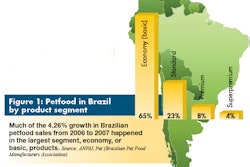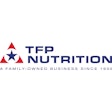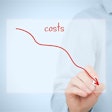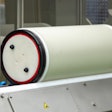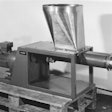I know you've heard it all before - and it's not sexy or exciting. I also know the idea of package sustainability (recycling) has come and gone before. But, thanks to the efforts of companies like Wal-Mart, this time it's an idea that's here to stay. It's an idea that can save you money, help your image - and help reduce government intervention.
The following "What is sustainable packaging?" list blends broad sustainability goals and business criteria for performance and cost:
-
Is beneficial, safe and healthy for individuals and communities throughout its life cycle;
-
Meets market criteria for performance and cost;
-
Is sourced, manufactured, transported and recycled using renewable energy;
-
Maximizes the use of renewable or recycled source materials;
-
Is manufactured using clean production technologies and best practices;
-
Is physically designed to optimize materials and energy; and
-
Is effectively recovered and utilized in biological and/or industrial cradle-to-cradle cycles.
Wal-Mart's scorecard
In 2006 Wal-Mart announced its new Sustainable Packaging Scorecard, which is working toward a 5% packaging reduction across its global supply chain by 2013. Wal-Mart's ultimate goal, according to Brand Packaging , is to become "packaging neutral" by 2025.
This would mean a savings of US$3.4 billion for the retailer, 213,000 fewer truckloads of merchandise, 67 million fewer gallons of diesel fuel and 700,000 fewer tons of carbon dioxide emissions. Wal-Mart's ultimate goal is to have all of the packaging that flows through its distribution chain recyclable, reusable, compostable or recoverable for future use.
Sustainability mantra
The mantra of sustainable packaging advocates is: reduce, reuse, recycle and renew. These ideas are worthy of your sincere attention.
Reduce. Removing excess packaging and reducing the overall packaging footprint are steps that go a long way toward sustainability, notes Tel Mininni, president of Design Force Inc. ( www.designforceinc.com ). With reduced packaging, more products can be packed into shipping cartons and more cartons onto pallets, resulting in fewer truckloads and harmful emissions. But because the process can reduce energy and material costs, it can also add substantially to profits.
Reuse. Reusing packaging is another key step you can take. Consider how common the practice of reusing milk bottles used to be for local dairy producers. Why not extend the idea of reuse to plastic food packaging, which can be reclaimed after the product is consumed to store other foods? Consumers are already purchasing containers to store their foodwhy not make a storage container a purchase bonus?
Recycle. In their book, Cradle to Cradle , architect William McDonough and chemist Michael Braungart make the case that product and packaging manufacturing should be reconfigured using a closed-loop process. Since the Industrial Revolution, a "cradle to grave" system has been in place where products and packaging end up in landfills at the end of their life cycles.
In a "cradle to cradle" approach, product and packaging materials are perpetually circulated and reused in a closed-loop system.
Renew. Consider renewable material sources. Bioplastics, for example, are made from corn, soy, sugarcane or even microbial sources, which all can be replenished, unlike nonrenewable resources like petroleum.
The SPC is an industry working group dedicated to transforming packaging into a system that encourages economic prosperity and a sustainable flow of materials.
The SPC is a project of GreenBlue, a not-for-profit, 501(C)(3) tax exempt organization. Contact:
SPC
600 E. Water St., Suite C
Charlottesville, Virginia 22902 USA
Tel: +1.434.817.1424, ext. 309
Fax: +1.434.817.1425
E-mail:
[email protected]
Website:
www.sustainablepackaging.org

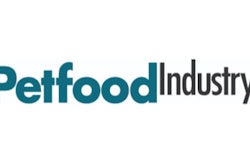

.png?auto=format%2Ccompress&fit=crop&h=167&q=70&w=250)
